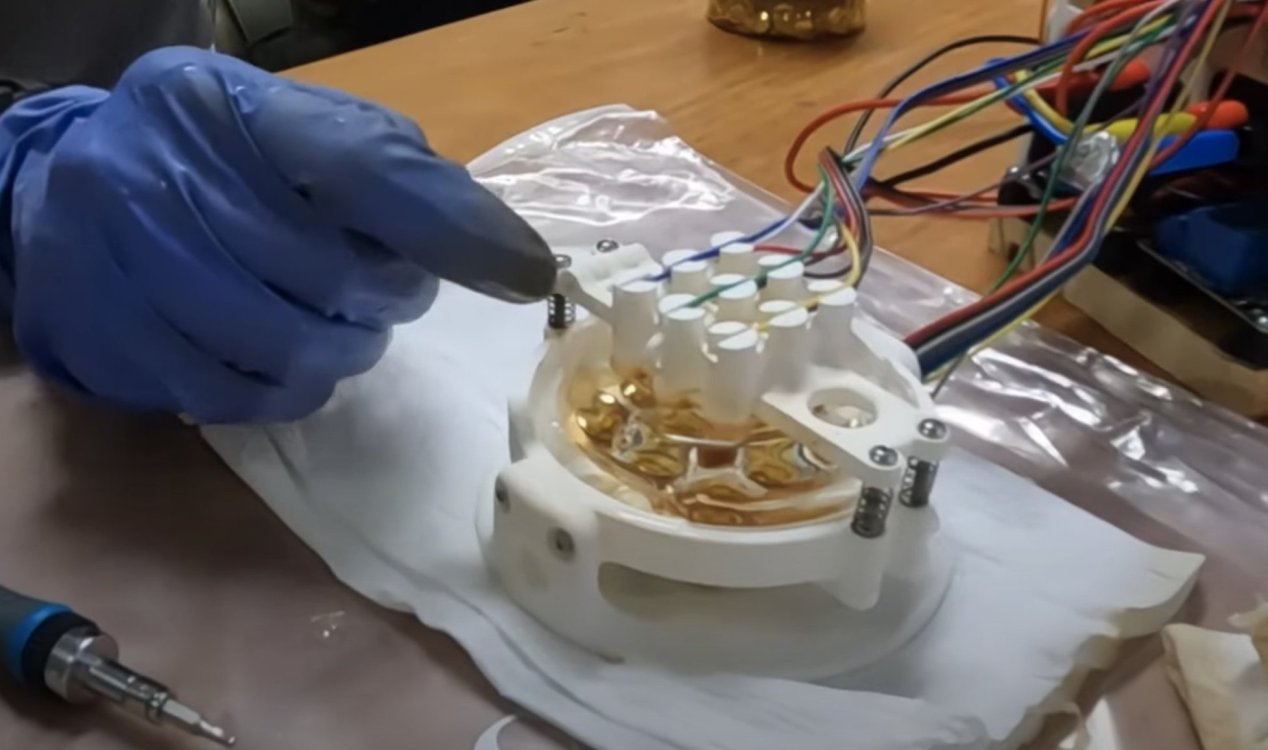Science & Technology
August 23, 2024 · 3 comments
3 comments

Image Credit: YouTube / New Scientist / University of Reading
The substance - an ionic electroactive polymer hydrogel - is reactive to electricity and when a current passes through it, it swells and stretches - mimicking the way the human brain forms connections.
To make it possible for the goo to play Pong - a simple video game in which a bat moves up and down the screen to hit a ball - the hydrogel was covered with two sets of electrodes, one to stimulate the goo and the other to record its movements.
"To induce emergent memory functions, the hydrogel must be able to influence actions within an environment," the scientists behind the experiment wrote.
"The change in environment as a result of those actions must feed back to the hydrogel, leading to changes in actions and memory behavior."
"To construct this closed loop and quantify the effect of memory, a suitable activity is required."
Remarkably, over time, the goo was able to improve its ability to play the game effectively.
That's not all, either, as the team is planning to teach it ever more complex tasks in the future.
Skeptics of this whole experiment needn't worry, though, as there's no chance at all that the goo will escape the lab and run amok on the streets... at least not yet anyway.
Source: Gizmodo | Comments (3)
Scientists have trained a bowl of goo to play the video game Pong
By T.K. RandallAugust 23, 2024 ·
 3 comments
3 comments
Image Credit: YouTube / New Scientist / University of Reading
The ion-laced gelatinous goo was not only able to move the bat around, but was even able to improve over time.
In a peculiar experiment that sounds like something out of the opening scene of a science-fiction horror movie from the 1950s, scientists at the University of Reading connected a bowl full of goo to a computer to learn more about the workings of biological neural networks - an analog for actual biological consciousness.The substance - an ionic electroactive polymer hydrogel - is reactive to electricity and when a current passes through it, it swells and stretches - mimicking the way the human brain forms connections.
To make it possible for the goo to play Pong - a simple video game in which a bat moves up and down the screen to hit a ball - the hydrogel was covered with two sets of electrodes, one to stimulate the goo and the other to record its movements.
"To induce emergent memory functions, the hydrogel must be able to influence actions within an environment," the scientists behind the experiment wrote.
"To construct this closed loop and quantify the effect of memory, a suitable activity is required."
Remarkably, over time, the goo was able to improve its ability to play the game effectively.
That's not all, either, as the team is planning to teach it ever more complex tasks in the future.
Skeptics of this whole experiment needn't worry, though, as there's no chance at all that the goo will escape the lab and run amok on the streets... at least not yet anyway.
Source: Gizmodo | Comments (3)

The Unexplained Mysteries
Book of Weird News
AVAILABLE NOW
Take a walk on the weird side with this compilation of some of the weirdest stories ever to grace the pages of a newspaper.
Click here to learn more

Support us on Patreon
BONUS CONTENTFor less than the cost of a cup of coffee, you can gain access to a wide range of exclusive perks including our popular 'Lost Ghost Stories' series.
Click here to learn more
Russia and the War in Ukraine
Palaeontology, Archaeology and History
United States and the Americas
Cryptozoology, Myths and Legends
Total Posts: 7,781,446 Topics: 325,576 Members: 203,430
Not a member yet ? Click here to join - registration is free and only takes a moment!
Not a member yet ? Click here to join - registration is free and only takes a moment!

































Please Login or Register to post a comment.